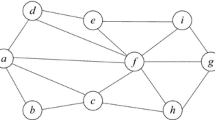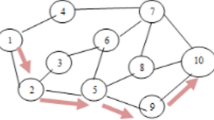Abstract
Wireless networks (WSN) are sometimes inaccessible to humans and can be found in deep forests, diverse risky fields, high-mountainous areas and even underwater environments at least. Owing to continuous or instant changes in environmental parameters, failures in sensor networks are unavoidable. A fault can lead to a misread, which can harm the environment economically and physically. In several primary applications, wireless sensor networks (WSNs), including battlefield control, environmental monitoring and forestry fire monitoring are widely used. Research is being conducted to reduce energy usage, improve the longevity and life of the WSN network. This paper provides an ANFIS method for the summation, based on the neuro-fuzzy optimization model estimator of defect-tolerant WSNs. For WSNs, the scheme proposes the use of an intra-cluster and inter-cluster failure detection estimator adaptive neuro-fuzzy inference system (ANFIS). Traditional detection strategies for malfunction include a centralized mechanism for avoiding failure detection when the principal defect detector fails. In typical methods, the fault nodes are discarded. To solve these problems, we propose the identification and classification of distributed fault nodes by means of adaptive neuro-fuzzy inference method.









Similar content being viewed by others
References
Akyildiz I, Su W, Sankarasubramaniam Y, Cyirci E (2002) Wireless sensor networks: a survey. Comput Netw 38(4):93–422
Attia SB, Cunha A, Koubaa A, Alves M (2007) Fault-Tolerance mechanisms for Zigbee wireless sensor networks. Technical Report. IPP-HURRAY Research Group, Polytechnic Institute of Porto
Chang S, Chung P, Huang T (2013) A fault tolerance fuzzy knowledge based control algorithm in wireless sensor networks. J Converg Inf Technol (JCIT) 8(2)
Chiasserini C-F, Garetto M (2006) An analytical model for wireless sensor networks with sleeping nodes. IEEE Trans Mob Comput 5(12):1706–1718
Crossbow (2003) Technical report. Available online at /http://www.xbow.comS. Accessed 7 Jan
Curiac DI, Volosencu C (2012) Ensemble based sensing anomaly detection in wireless sensor networks. Expert Syst Appl 39(10):9087–9096
Di X, Gosh BK, Tarn T (2000) Sensor-based hybrid position/force control of a robot manipulator in an uncalibrated environment. IEEE Trans Control Syst Technol 8(4):635–645
Ding M, Chen D, Xing K, Cheng X (2005) Localized fault-tolerant event boundary detection in sensor networks. In: Proceedings of 24th IEEE INFOCOM conference, vol 2. IEEE, New York, pp 902–913
Ding M, Chen D, Xing K, Cheng X (2005) Localized fault tolerant event boundary detection in sensor networks. In: Proceedings of the IEEE 24th annual joint conference of the IEEE computer and communications societies (INFOCOM ’05), vol 2. IEEE, New York, pp 902–913
Hady AA, El-kader SMA, Eissa HS (2013) Intelligent sleeping mechanism for wireless sensor networks Egypt. Inf J 14(2):109–115
Heinzelman WR, Chandrakasan AP, Balakrishnan H (2002) An application-specific protocol architecture for wireless microsensor networks. IEEE Trans Wireless Commun 1(4):660–670
Jain N, Vokkarane VM, Wang JP (2008) Performance analysis of dual-homed fault-tolerant routing in wireless sensor networks. In: IEEE conference on technologies for homeland security. Waltham, MA, pp 474–479
Javanmardi S, Barati A, Dastgheib SJ, Attarzadeh I (2012) A novel approach for faulty node detection with the aid of fuzzy theory and majority voting in wireless sensor networks. Int J Adv Smart Sensor Network Syst (IJASSN) 2(4):1–10
Jeevanandam C, Ramalakshmi K, Priya D (2014) I A survey on energy efficient fault tolerance mechanisms in wireless sensor networks. Int J Emerg Technol Adv Eng 4:330–334
Jiang P (2009) A new method for node fault detection in wireless sensor networks. Open Access Sensors J 9(2):1282–1294
Kaur A, Saini S (2013) Simulation of low energy adaptive clustering hierarchy protocol for wireless sensor network. Int J Adv Res Comput Sci Softw Eng 3(7):1316–1320
Katsura S, Matsumoto Y, Ohnishi K (2003) Analysis and experimental validation of force bandwidth for force control. IEEE Int Conf Control Syst Technol 53(3):796–8001
Manjeshwar A, Agrawal DP (2000) TEEN: a routing protocol for enhanced efficiency in wireless sensor networks. In: Proceedings of 15th IEEE international parallel and distributed processing symposium, San Francisco, CA, USA, pp 2009–2015
Mehmood A, Alrajeh N, Mukherjee M, Abdullah S, Song H (2018) A survey on proactive, active and passive fault diagnosis protocols for WSNs: network operation perspective. Sensors 18:1787. https://doi.org/10.3390/s18061787
Qiu M et al (2013) Informer homed routing fault tolerance mechanism for wireless sensor networks. J Syst Architect 59:260–270
Sharma VK, Shukla SSP, Singh V (2012) A tailored Q-Learning for routing in wireless sensor networks. In: IEEE international conference on parallel distributed and grid computing (PDGC), pp 663–668
Rajasegarar S, Leckie C, Palaniswami M, Bezdek JC (2006) Distributed anomaly detection in wireless sensor networks. In: Proceedings of the 10th IEEE Singapore international conference on communication systems (ICCS ’06). IEEE, New York, pp 1–5
Ranga V, Dave M, Verma AK (2015) A fuzzy logic based joint intra-cluster and inter-cluster multi-hop data dissemination approach in large scale WSNs. In: Proceedings of 2015 international conference on future computational technologies (ICFCT’2015), pp 71–77
Swain RR, Dash T, Khilar PM (2019) Investigation of RBF kernelized ANFIS for fault diagnosis in wireless sensor networks. In: Verma N, Ghosh A (eds) Computational intelligence: theories, applications and future directions—volume II. Advances in intelligent systems and computing, vol 799. Springer, Singapore. https://doi.org/10.1007/978-981-13-1135-2_20
Volosencu C, Curiac DI (2013) Efficiency improvement in multi-sensor wireless network based estimation algorithms for distributed parameter systems with application at the heat transfer. EURASIP J Adv Signal Process 1(1):1–17
Xu N, Rangwala S, Chintalapudi KK et al (2004) A wireless sensor network for structural monitoring. In: Proceedings of the 2nd international conference on embedded networked sensor systems (SenSys ’04), pp 13–24
You Z, Zhao X, Wan H, Hung WNN, Wang Y, Gu M (2011) A novel fault diagnosis mechanism for wireless sensor networks. Math Comput Model 54(1–2):330–343
Younis O, Fahmy S (2004) HEED: a hybrid, energy-efficient distributed clustering approach for ad hoc sensor networks. IEEE Trans Mobile Comput 3(4):366–379
Yu SC, Zhang YY (2007) R-Sentry: providing continuous sensor services against random node failures. In: IEEE International conference on dependable systems and networks. Edinburgh, UK, pp 235–244
Author information
Authors and Affiliations
Corresponding author
Ethics declarations
Conflict of interest
The authors declare no conflict of interest.
Additional information
Publisher's Note
Springer Nature remains neutral with regard to jurisdictional claims in published maps and institutional affiliations.
Rights and permissions
About this article
Cite this article
Rajan, M.S., Dilip, G., Kannan, N. et al. Diagnosis of fault node in wireless sensor networks using adaptive neuro-fuzzy inference system. Appl Nanosci 13, 1007–1015 (2023). https://doi.org/10.1007/s13204-021-01934-0
Received:
Accepted:
Published:
Issue Date:
DOI: https://doi.org/10.1007/s13204-021-01934-0




